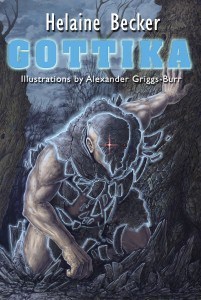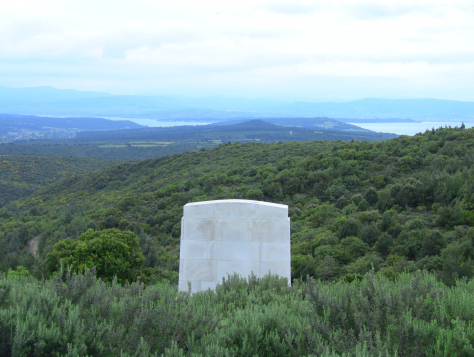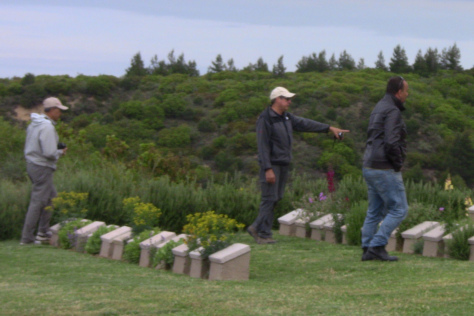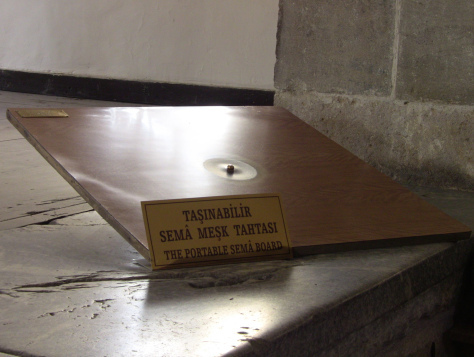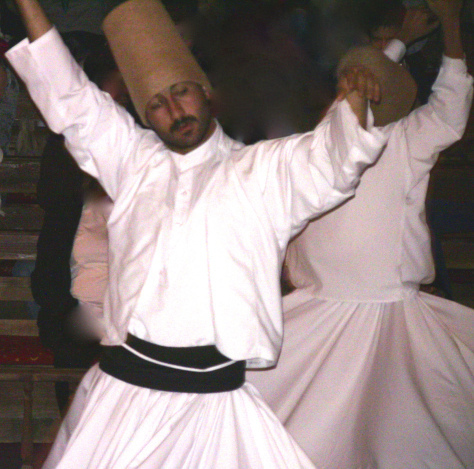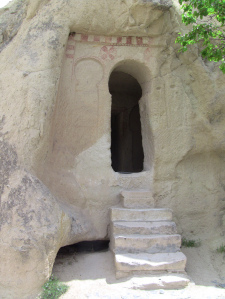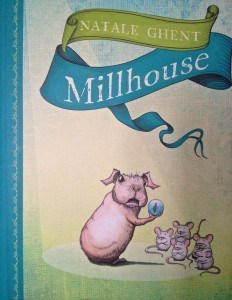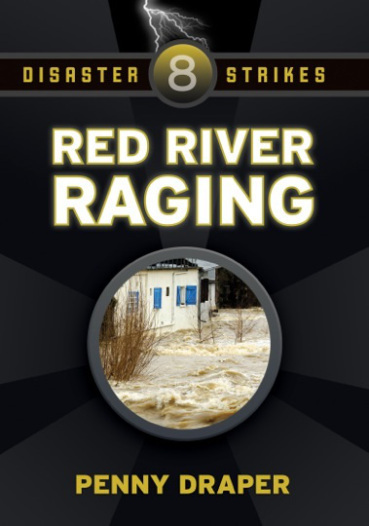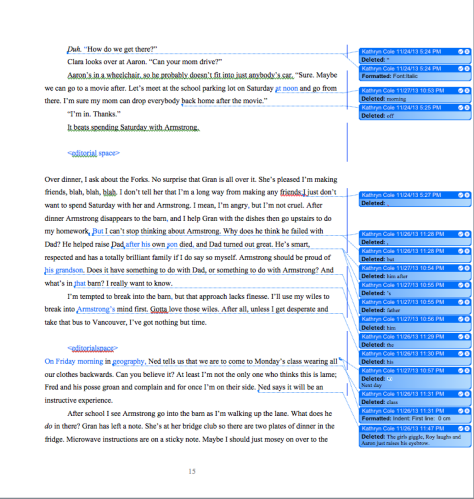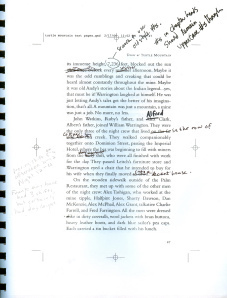Penny Draper's Blog, page 2
August 14, 2014
Gottika
The masked creature with glowing red eyes that crawls over the cover of Helaine Becker’s new novel will fascinate fans of futuristic fantasy. Gottika is a modern retelling of the legend of the Jewish golem, a magical creature created from clay and mud whose very existence challenges how we think about ourselves.
Fifteen-year-old Dany is proud to be a Stoon, a peaceful people with a deep history and love of learning. Unfortunately, the Stoons live in the shadow of a city named Gottika, a fearful place where hatred, prejudice, and ignorance rule. When tensions erupt, Dany learns that his father has the power to conjure a golem to help their cause. Called Moishe, the huge creature of clay does help – and hinder – the Stoons. But can Dany’s father control him? In the powerful conclusion, Dany must confront difficult truths about himself, his family, and his world.
Becker’s fantasy stays true to the core of the legend, effortlessly drawing readers into the story. Alexander Griggs-Burr’s illustrations are a superb addition, edging the book into the realm of graphic novel. The chapters drawn in comic book style further the plot and ramp up the tension.
The juxtaposition of text and comics, combined with the talents of Becker and Griggs-Burr, ensure a broad audience for Gottika. Lovers of fantasy, myths and legends, action comics, a hero’s quest, and even Dungeons and Dragons fans will want to keep reading late into the night. And this story will continue to resonate the morning after.
Gottika
By Helaine Becker, illustrations by Alexander Griggs-Burr
Dancing Cat Books
978-1-77086-391-0
June 2014
240 pages
Ages 9-12


August 8, 2014
Turkey: The Last Post
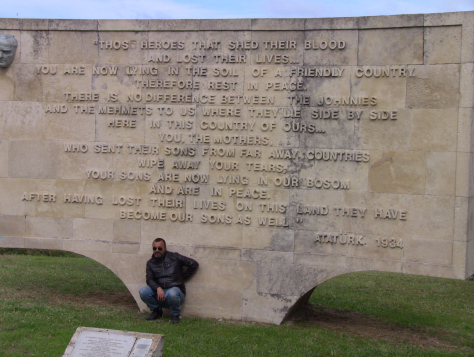 Anzac Memorial, Gallipoli
Anzac Memorial, GallipoliThis is the centenary of the Great War. As we ponder the lessons that this pivotal global event taught us, without forgetting the current situations in Gaza, Ukraine, Iraq and Syria, one wonders if we have learned anything from the immense sacrifice of one hundred years ago.
One of our last stops in Turkey was at Gallipoli. It is the defining battleground for Australians and New Zealanders, just as Vimy Ridge is for my fellow Canadians. As luck would have it, most of our compatriots on the tour were from Australia, and seeing Gallipoli through their eyes was revealing.
This is it: a narrow peninsula of hilly land between the Aegean Sea and the Dardanelles. It is strategically important as an entryway to the Sea of Marmara and eventually, the Black Sea and Russia. In a campaign that lasted just shy of nine months, Turkey held the territory against Allied Forces but at great cost. 100,000 men died. The campaign changed history, both for the Allies and for the Ottomans.
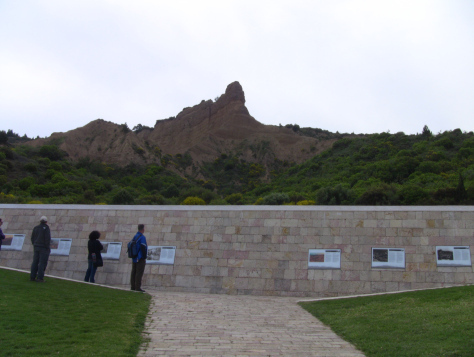 The Anzac Memorial is a moving tribute to those who sacrificed their lives for the cause. For our little group of travellers, it was made more memorable by the presence of what has come to be known as a “third generation survivor”. (The second generation facilitates the telling of the stories; the thirds are the ones who cherish and preserve the memories for the future.) This man’s grandfather fought at Gallipoli, and was one of the few who came home. He wrote his memories down in a small journal, which his grandson had carried with him from Australia. Piecing the battle together from the notes, we followed the grandfather’s path to Quinn’s Post, the place where most of his mates were killed. In the small cemetery there, we all helped find the gravestones of the soldiers of that regiment so that his grandson could take pictures of each and every one.
The Anzac Memorial is a moving tribute to those who sacrificed their lives for the cause. For our little group of travellers, it was made more memorable by the presence of what has come to be known as a “third generation survivor”. (The second generation facilitates the telling of the stories; the thirds are the ones who cherish and preserve the memories for the future.) This man’s grandfather fought at Gallipoli, and was one of the few who came home. He wrote his memories down in a small journal, which his grandson had carried with him from Australia. Piecing the battle together from the notes, we followed the grandfather’s path to Quinn’s Post, the place where most of his mates were killed. In the small cemetery there, we all helped find the gravestones of the soldiers of that regiment so that his grandson could take pictures of each and every one.
The quotes on the Anzac Memorial plaques are telling. First, from Winston Churchill: A good army of 50,000 men and sea power – that is the end of the Turkish menace. Then from Joseph Gasparich, a New Zealand soldier: Sir, this is a sheer waste of good men. Followed by Memiș Bayraktar, a Turkish soldier: Countless dead, countless! It was impossible to count. And much later from Atatürk, formerly Mustafa Kemal, commander of the 19th Division in Gallipoli:
Those heroes that shed their blood and lost their lives… You are now lying in the soil of a friendly country. Therefore rest in peace. There is no difference between the Johnnies and the Mehmets to us where they lie side by side now here in this country of ours… you, the mothers, who sent their sons from faraway countries wipe away your tears; your sons are now lying in our bosom and are in peace. After having lost their lives on this land they have become our sons as well.
These beautiful words are chiselled in stone at the Anzac Memorial, as seen in the top photo. But I wonder – was there no way the Johnnies and the Mehmets could have become brothers without slaughtering each other first?
Historians can explain to us the complex geopolitical and religious alliances that were in play in 1914, creating stresses sufficient to allow the assassination of an Austrian Archduke to explode into a worldwide conflict that left 16 million dead. Maybe the world needed to change, and the assassination was merely the catalyst. But again I wonder – must changing the world be so colossally destructive?
Speaking of being destructive, I happen to live in an earthquake zone. The “big one” is going to be awful and it’s going to change my world forever. It’s way overdue, but that’s fine by me. Instead of the big one we get hundreds of small quakes that continually ease pressure points, hopefully avoiding total disaster. Would that people could do the same.


July 30, 2014
To Be Entranced
Pause a moment to wonder about the purpose of a Sema Board. Here’s a hint: the board is approximately three foot square.
A manhole cover? The lid for a very large flour bin? A decorative wall panel?
I cannot even say myself, for certain, but I have the benefit of context and so can guess. I saw the Sema Board in the Mevlana Museum in Konya, Turkey, home of the the mausoleum of Jalal ad-Din Muhammad Rumi, a Persian Sufi mystic. Rumi was also known as Mevlana, the founder of the Mevlevi order of whirling dervishes.
Now can you guess?
It is said that one day Rumi was walking through the marketplace and heard the hammering of the goldbeaters. The sound was rhythmic; the hammers, to Rumi’s ear, were beating the dhikr, or Arabic rosary. It made him so happy that he stretched out his arms and started spinning.
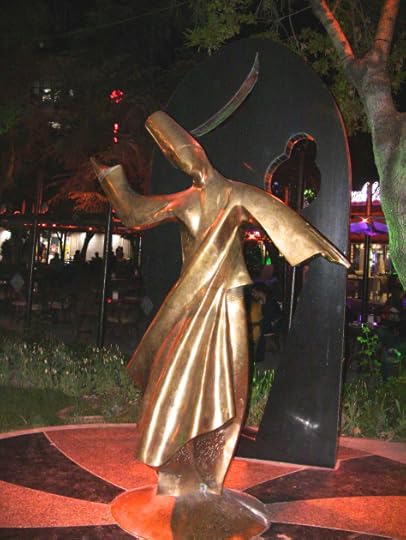 The Order of the Whirling Dervishes believes that the fundamental condition of our existence is to revolve. Scientifically, they are probably right. From electrons on up, it is easy to find examples of circular cycles: in chemistry, astronomy, biology, physics, history and our own lives. And yet we often carve out linear paths for ourselves. Could losing ourselves in the choreography of the cosmos be helpful?
The Order of the Whirling Dervishes believes that the fundamental condition of our existence is to revolve. Scientifically, they are probably right. From electrons on up, it is easy to find examples of circular cycles: in chemistry, astronomy, biology, physics, history and our own lives. And yet we often carve out linear paths for ourselves. Could losing ourselves in the choreography of the cosmos be helpful?
The mystic nature of the whirling dervishes was not acceptable to all, and in 1925, as part of new secularization policies, the Turkish government outlawed the practice. As is often the case in such situations, adherents kept the practice alive in secret. Thirty years later the restrictions were eased, and in the 1990’s lifted. In 2005, UNESCO proclaimed the Mevlevi Sema Ceremony of Turkey one of the Masterpieces of the Oral and Intangible Heritage of Humanity.
Several elements of the Sema Ceremony continue to whirl in my head. I offer them for your perusal, in linear form complete with bullet points, my preferred methodology for managing ideas that otherwise cause chaos.
In Rumi’s time, those wishing to become dervishes were given a cushion in a corner of the kitchen, which is where training took place. They stayed on the cushion for two full days, eating and sleeping in place, watching the training without participation before deciding whether to continue. I have never contemplated a life change so assiduously.
Training lasted a magical 1,001 days.
At the end of each of the four movements (selams) of the dance, the dervishes stop whirling. Each whirler crosses his arms over his heart and pairs with another whirler. Shoulder to shoulder, hip to hip, the two press into one another, ostensibly to steady themselves. But the symbolism of this connection resonates with me even more than the dance itself.
Masterpiece of the Oral and Intangible Heritage of Humanity? Check out UNESCO’s website. I love the idea that there is recognition for the intangible, for soul.
A whirling dervish rotates on his left foot, using his right to push his body around the heart in a counter-clockwise direction. The whirler is meant to keep his eyes open but unfocused, allowing images to flow and blur. This is in direct contradiction to my daughter’s ballet training and the focused spotting required for pirouettes. Although I did not see this in practice, my guess is that the nail in the Sema Board helps anchor the left foot, connecting it to the ground while the world revolves crazily in front of the eyes.
I found a flat rock embedded in my patio and gave whirling a try. Without focus, I felt nauseous and disoriented. My perspective was skewed and I staggered as if drunk on the “choreography of the cosmos.” So I ask myself, when was the last time I was comfortable whirling? My father’s airplane rides? On an ice rink? Playing crack the whip?
When was the last time I could let go and be totally entranced?


July 18, 2014
A Roof Over Our Heads
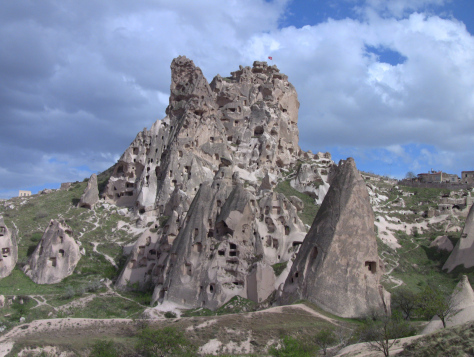 Cappadocia, Turkey
Cappadocia, TurkeyWhen visiting Cappadocia, it’s almost impossible NOT to imagine hobbit-like creatures living in the caves that have been painstakingly carved out of the rock. Hundreds upon hundreds of caves dot the area, and even the most unimaginative among us will begin to create stories about the inhabitants. Who are these people, and where did they come from? What do they look like? Why do they live in caves? How does their society work? Voila, instant fantasy novel.
But Cappadocia isn’t a fantasy; it’s a real place with real people who just happen to live in fairy chimneys. I was invited to dinner by one of them. Seeing the trenches chiselled out for electrical wires and the makeshift wooden steps that led from one level of “cubbyholes” to the next juxtaposed with stainless steel appliances in the ultra-modern kitchen was interesting, to put it mildly. For this family, their rock home is their greatest asset, a part of their heritage passed down through the generations.
Cappadocia was the centre of Hittite power in the Bronze Age, then passed through the hands of King Croesus and Alexander the Great, among many others. It has belonged to Persia, Rome, Armenia, the Ottoman Empire and finally Turkey. The earliest Christians lived here, hiding in a network of underground caves when persecuted. This place is a living history that spans more centuries than my Western mind can comprehend. When added to the surreal landscape, Cappadocia feels peopled with ghosts.
But the real ghosts in Turkey are elsewhere, about a thousand kilometres away in Kayaköy. The very name of this place, the Ghost Village, is evocative. Its place in history is important, devastating, and unfortunately, predictable.
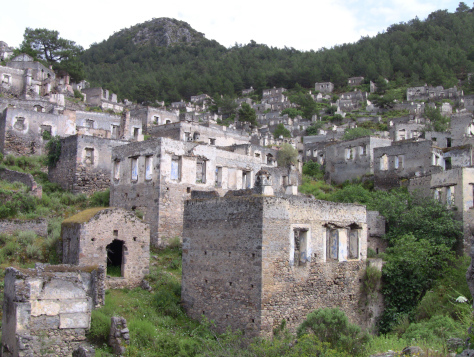 Kayaköy
KayaköyDuring the early twentieth century, Kayaköy was home to approximately 2000 Greek Orthodox Christians. In 1923, at the end of the Greco-Turkish War, 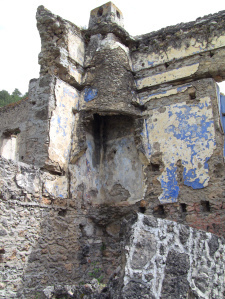 all of the inhabitants were sent back to Greece as part of a “mutually agreed expulsion” between the two countries. The population exchange was based on religious identity, with 1.5 million Anatolian Greek Orthodox Christians sent home in exchange for 356,000 Muslims from Greece. Visiting Kayaköy now is an eerie experience. The crumbling, abandoned homes still show traces of cheery blue paint, left from a happier time. Secret gardens flourish in bedrooms.The church is empty.
all of the inhabitants were sent back to Greece as part of a “mutually agreed expulsion” between the two countries. The population exchange was based on religious identity, with 1.5 million Anatolian Greek Orthodox Christians sent home in exchange for 356,000 Muslims from Greece. Visiting Kayaköy now is an eerie experience. The crumbling, abandoned homes still show traces of cheery blue paint, left from a happier time. Secret gardens flourish in bedrooms.The church is empty.
(As a point of interest, I’m reading Louis de Bernières’ 2004 novel Birds Without Wings as part of the aftermath of my Turkish adventures. Kayaköy was the inspiration for his fictional village of Eskibahçe.)
All this has made me think about the different kinds of homes we live in today, and the number of people who have no home at all, whose roof is the sky or a borrowed tent. 10,000 years from now, what stories will the future tell of our homes, and our lives within them?


July 4, 2014
Curating Magic Moments
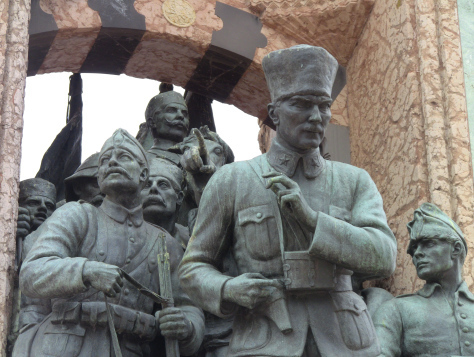 Ataturk, as depicted on the Republic Monument in Taksim Square, Istanbul. On one side Ataturk wears the military uniform from his early years; on the other he wears western clothes, as founder of the Turkish Republic.When I was a little girl my dad would, from time to time, call out, “Magic moment!” This was the cue for my sister and I to freeze for a photograph, because whatever we were doing at the time was apparently worthy of remembrance (to Dad, anyway). It wasn’t until many years later that I realized the term came from a song made popular by Perry Como in 1957. “I’ll never forget the moment we kissed the night of the hayride…” Okay, so times may have changed since a stolen kiss constituted a magic moment. But the concept has stuck in my brain.
Ataturk, as depicted on the Republic Monument in Taksim Square, Istanbul. On one side Ataturk wears the military uniform from his early years; on the other he wears western clothes, as founder of the Turkish Republic.When I was a little girl my dad would, from time to time, call out, “Magic moment!” This was the cue for my sister and I to freeze for a photograph, because whatever we were doing at the time was apparently worthy of remembrance (to Dad, anyway). It wasn’t until many years later that I realized the term came from a song made popular by Perry Como in 1957. “I’ll never forget the moment we kissed the night of the hayride…” Okay, so times may have changed since a stolen kiss constituted a magic moment. But the concept has stuck in my brain.
I’ve just returned from a major overseas trip. It was exciting, interesting and thought-provoking. I’d like to write about it, but travel writing can so easily turn into a laundry list of visuals. I find I need time and distance for the true magic moments to rise to the surface of my brain. They aren’t just the ones captured in a photo, in fact, quite the opposite. These days, when every moment is captured by a smartphone, it’s the moments that linger without benefit of a visual jog that are truly magic.
Over the summer, I expect most of the memories of my trip will sift down to the bowels of memory to be lost in the murk forever. But if any moments survive time and distance to become magic, I promise to share. Here’s the first, inspired not only by some conversations I had in Turkey, but by current events in Iraq.
The Breakfast Boys
There was a young man named Hamza who worked the breakfast shift at our hotel in Istanbul. He was pleasant, cheerful and helpful, but I remember him most for the broad white smile that lit up his face. During the course of our morning chats, I learned that he was from Syria and had only been working at the hotel for fifteen days. Hamza and his brother had escaped the fighting in their own country and come to Turkey with the hope of raising enough money to bring their parents out to join them.
I remember searching his eyes, wondering what they had seen. My much older eyes had never seen the like, that I knew for certain.
Later, I asked our guide how the Turks felt about the conflict in Syria. The two countries share a border and Turkey is currently playing host to a million Syrian refugees displaced by the conflict, so there had to be opinions. My guide had compassion, but felt mostly worry. “Where will all those people go? And what will they do? We can house them and feed them for a while, but we do not have enough jobs for all.” Clearly, Hamza had been one of the lucky ones.
As for Assad, the hope was that he would win. “Don’t be surprised,” he said. “We don’t like him any more than you do. But he is the only one strong enough to keep the radical groups at bay. They are they real danger.”
We talked about democracy. We in the West like to talk about democracy. “Assad knows there must be change,” our guide went on, “but it will come more slowly than North Americans want. It cannot be imposed and it is not instant. But tyrant that he is, Assad will get it done. You are all so impatient.”
My short history has not taught me to take the long view; I find it hard to conceptualize the wave after wave of political, religious and cultural change that have influenced the evolution of Anatolia over the past 10,000 years. But the long view isn’t much help to somebody like Hamza, and as it turned out, his good luck didn’t last. When I returned to the hotel a few weeks later, he was gone. His brother had been deported, I was told, and Hamza didn’t want him going back to Syria alone. I wondered what the future now held for them, or for their parents.
“Don’t worry,” said the new breakfast boy. “I can help you.” He was Kurdish, he said, just come from the east. His grin was just as bright and hopeful as Hamza’s had been. I face none of their difficulties, yet rarely smile like that. I would not have presumed to take a picture of their smiles, but they will remain in my heart as a reminder whenever my puny frustrations get the better of me.


June 10, 2014
Millhouse
In the tradition of Charlotte’s Web and The Cricket in Times Square, Natale Ghent’s Millhouse stars an eclectic cast of creatures with hopes and dreams just like our own. Millhouse (or Milly) is a hairless guinea pig and the pet shop outcast because, well, he’s naked. Milly was raised by a Shakespearean actor and longs to get back to the stage. Elliot, an asthmatic rat and Milly’s only friend, has connections and is able to call upon an army of mice to bring the theatre to Milly. But the devilish Pepper Brown ferret, who has “a heart of cobwebs and scorpion tails,” is out for Milly’s blood and will do anything to thwart the pig’s rise to fame.
Following the adventures of the guinea pigs, gerbils, mice, and rats of the pet shop will be a jolly treat for young readers, especially since many will have these animals as pets of their own. Milly’s fears and longings will feel very real to seven and eight year olds. He wants to be loved, he wants to be special, and he doesn’t want to be afraid. The language is lyrical and lends itself to reading aloud, from the stuttering taunts of the gerbils to the hissing threats of the Pepper Brown.
Ghent’s occasional illustrations capture the personalities of the animals perfectly, and add a touch of whimsy and light-heartedness throughout, alleviating the tension when Milly’s adventures land him particularly tight spots. On the author’s blog Ghent fantasizes about movie rights and that would be delightful – but only if Ghent draws all the pictures!
Millhouse
By Natale Ghent
978-1-77049-639-2
Tundra Books
May 2014
192 pp
Ages 7-10


May 27, 2014
-1: Welcome to the World
They say that releasing a book into the world is like giving birth. Well, I’ve done both, and I wouldn’t agree. With one, the work is done before the birth and with the other, the work comes after.
With a baby, one does not consciously create fingers and toes. (Thank goodness the body knows how to do all that important stuff.) Physical creation comes first; it isn’t until after birth that the mother can begin to shape the newborn and make it ready to go out into the world.
Giving birth to a book is exactly the opposite. Physical creation comes after the shaping, and once the book is made, there is no more you can do. No option to correct mistakes or learn from early reviews. The book is done, finished, ready or not. It’s a terrifying, irrevocable moment.
This is Red River Raging’s moment. It is out there in the world, at Amazon and Chapters and Barnes & Noble and iBooks and Kindle and Nook, and hopefully, at your independent bookstore as well. It is done, for better or worse. For those of you who choose to read it, and compare it with the last thirty days worth of blogs, I hope you find it interesting. There will be surprises, and likely disappointments. I can’t change that now. I do know that I learned something in the writing, and perhaps even more in the blogging. I’ve discovered that revealing one’s process can be even more uncomfortable that revealing the writing itself.
Thanks for sharing the journey with me.
(My apologies if this is the second time you have received this post. Something went wrong and most people did not receive this entry, so here is Take Two. There’s probably some poetic justice in disaster occurring on the last post, but I’ve decided not to let my mind go down that path.)


May 23, 2014
-2: Final Editing
There was a time when we did edits the old-fashioned way, by sending a paper copy of the manuscript by post (you remember the postal service, don’t you?), with the edits marked in pencil.
Individual editors marked their initials beside their notations, and all changes had to be found and made in the corresponding copy housed in the computer, then saved to disk. Some of you may remember that technology.
Our present system is faster and simpler and I am forever grateful, in spite of the colourful horror show I see when I open up the track changes. The difficulty now is to stop long enough to consider each offering. Do I or don’t I? It is never wise to “accept” too easily, in editing or in life.
Still, some knotty problems can arise. Sometimes political correctness can be the culprit, as it was in my first book. Do we say “Indian” or “First Nations”? The former is historically correct (the story takes place in 1903) but unacceptable today. In RRR, there were more problems with naming. Is “fisherman” derogatory, from the point of view of gender equality? And can you call a friend “buddy” in Vancouver? I know a lot of Vancouverites who use the term, but are they just weird?
The bottom line is this: I LOVE editors. Editors make books better. From the first, most exciting and substantive pass through the work, when we talk together about themes, through personalities and plotting, all the way through timelines and pacing to sentence structure and grammar, it’s a rollicking ride. And we can’t forget commas. The intensity of the focus as we zoom in always teaches me something new.
Thirty days, 35,000 words, 125 kms on my treadmill desk, 5000 kms on my scooter, more than 8 million sandbags and 77,000 volunteers later, we have a book. So to Barbara and Kathryn, Laura and Susan, the copy-editors and the proofreaders and the many others who have had a hand in making the story of the Red River people ready for public consumption, my admiration, gratitude and thanks. Red River Raging is their story just as much as it is mine.


May 21, 2014
-3: The Pros and Cons of Commas
When kids tell me that spelling and punctuation are old-fashioned, I see red. I will admit to the reality that norms change over time. Conventions shift, methodologies fall in and out of favour. But disappear? Not on your life. Punctuation helps structure ideas, and is the tool required to ensure clarity of thought in the spoken and written word. Yes, I’m ranting.
These same kids will say, “But I know what my friend is trying to say in this text message even if there aren’t any commas and the words are missing letters so it’s okay!” Well, sure, but the kid probably knew what his friend was going to say anyway, and could guess at the content from context. That’s not clarity; it’s luck. And if this kid wants to read anything more complicated than a text message (and I truly hope in time he will), he needs tools, not guesswork. Just as the alphabet gives us the foundation for sounding out difficult words, punctuation gives us the building blocks for understanding complex sentences. Yes, I’m still ranting.
I remember a wonderful (but very sad) movie called Wit starring the marvellous Emma Thompson. In it Thompson plays an English literature professor who rails against the “hysterical punctuation” of a particular editor. She then reads the offending passage, complete with hysterical punctuation, and it’s one of the best movie scenes ever. It illustrates the other end of the punctuation spectrum, and I have to say I felt more comfortable there.
Although I’m not quite the zealot that Thompson’s character was (although I’ve heard snickers when I say that), I like to be careful. Commas separate clauses; semi-colons join two independent clauses. Right?
Apparently not. Early in my career an editor tried to gently ease me into the 21st century. “Penny, you’re absolutely right about the semi-colons, absolutely. But we try not to use them quite so much, as they’ve fallen out of fashion.”
I didn’t get the memo.
So in that book we virtually eliminated the semi-colon. It was a painful process for me, as I have always found it to be a useful little workhorse, worth far more than just a wink ;)
In the next book, it was commas. It was agreed that shorter sentences and fewer commas would be easier to read. It certainly changed the flow, but likely no one but me cared. Without commas, I feared that some of my sentences would become run-ons, but in this modern era that doesn’t matter. I feel old. But like the cliche says, you can teach an old dog new tricks, and I learned the modern way.
Red River Raging takes place in the not-too-distant past, in the new age of limited punctuation. So that’s how I wrote it, with a chunky, punchy rhythm. It works, I think, because of the first person approach that I talked about earlier. Finn, like any other thirteen-year-old, is likely to speak in no-comma mode.
My new editor just sent back some of her notes on the early copy. “I think there should be more commas,” she said. Hallelujah! I put them back in their rightful places. Then the proofreader got the copy. She took them out.
I’m confused. If the world takes away my periods, serious action may have to be taken.


May 20, 2014
-4: Passing the torch
It’s time for the final scene, the tying up of loose ends and the recognition that Finn is not the boy he used to be. This is hard to write without spoilers. So instead, I will outline my goals.
1. Resolve all outstanding issues.
This is harder than it first appears. A story is really an interaction between the author and the reader, or the teller and the listener. I know what issues I intend to bring to the reader, but what issues has my reader brought to the story?
The African storyteller ends each story with a wonderful statement: This be my story. Whether it be sweet or whether it be not sweet, take some for yourself and let the rest come back to me. (Traditional). This statement evokes strong imagery for me. My imagination sees the story as something akin to a ball of dough. The teller put bits of dough together to make the story, and the listeners all reach in and take the bits that mean something to them. When I tie up loose ends, I need to imagine what bits to address, and hope I’ve imagined correctly.
2. Choose the right cast members.
I need to guess which of the many characters deserve to be in the final scene. Who will readers most want – need – to appear to say good-bye?
I remember giving an earlier manuscript to a reader before it was finished. When I got it back, the reader said, “I can’t wait to hear what happens to Jesper!” Jesper? He was a peripheral character who had in no way earned a place in the final scene. Boy, was I wrong.
3. Give closure to the tragedy.
We can’t forget that this is a real disaster. Bad stuff happened, and it’s upsetting. They say time heals, but over the course of one book, there is no time for that to take place. So I need there to be gentleness at the end, a sense of purpose and moving forward in spite of, or maybe because of, the events in the book. What did it all mean? Did the characters make a difference?
4. Elicit the “Sigh of Satisfaction.”
No explanation required.
I have allotted a thousand words to do all this. No problem, right?



